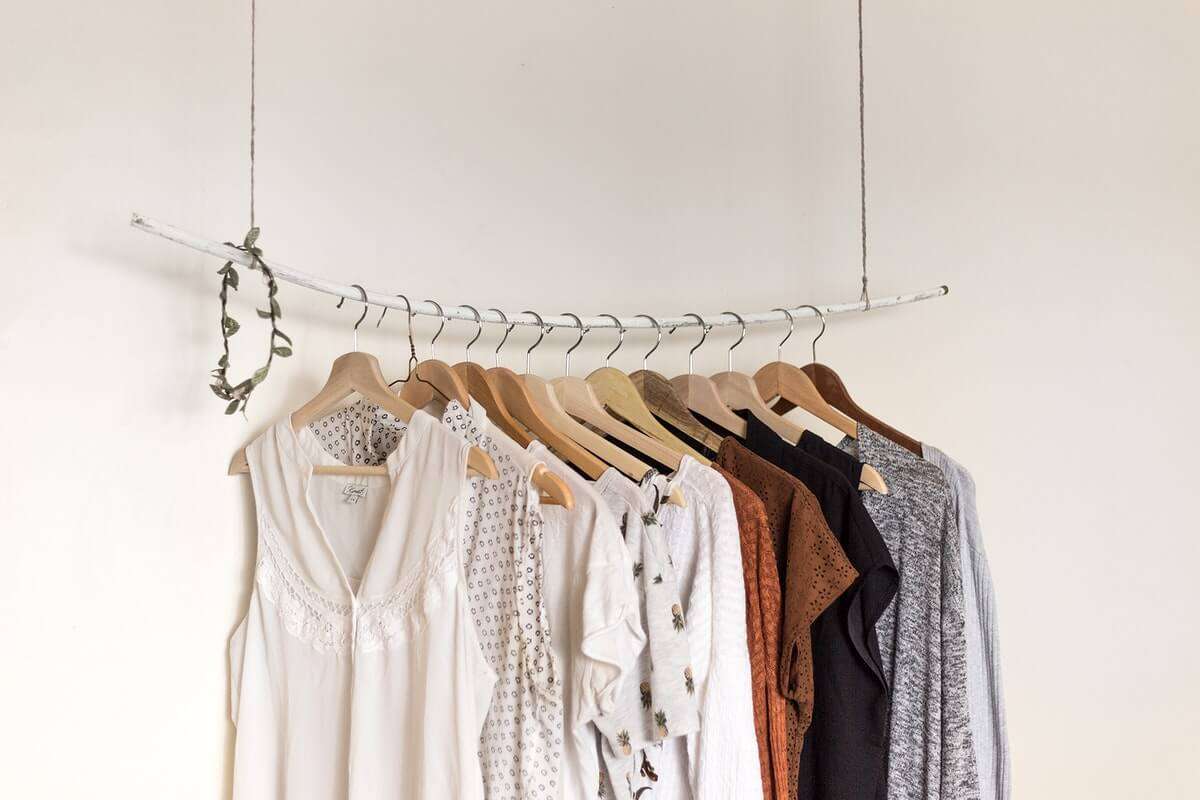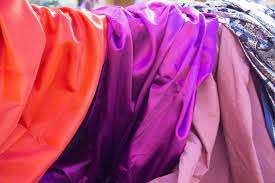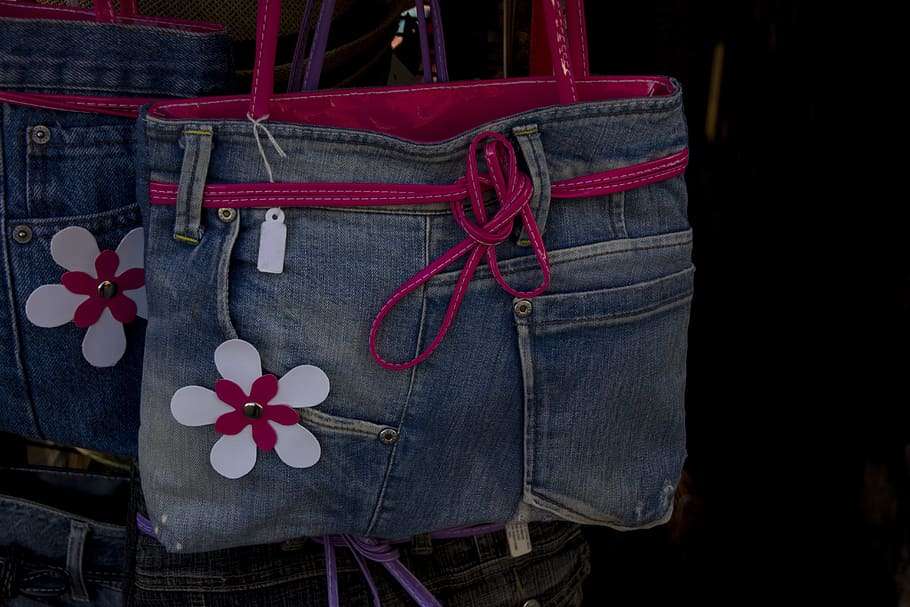
Eco-Friendly and Sustainable Clothing: A Guide for Conscious Consumers
By Rhea Philips | March 25, 2023
Eco-friendly sustainable clothing is a great way to be environmentally conscious and look stylish at the same time. Whether you’re looking for something casual or more formal, there are plenty of options that can meet your needs without sacrificing style.
But what exactly is eco-friendly sustainable clothing? How does it differ from traditional fashion? Read on to learn all about eco-friendly sustainable clothing, its benefits, and how you can incorporate it into your wardrobe.
We all want to feel good in our clothes, but we also have an underlying desire for freedom – freedom from harming the environment with wasteful consumption habits. And that’s where eco-friendly sustainable clothing comes in! Not only will wearing this type of garment free us from guilt over harming the planet, but it’ll also make us look absolutely fabulous while doing so.
The best part about eco-friendly sustainable clothing is that regardless of whether you prefer vibrant colors or timeless neutrals, classic cuts or modern silhouettes, there are lots of choices available to suit any taste – without compromising environmental standards.
So if you’re interested in making a positive impact on the world around you through fashion, read on to find out why eco-friendly sustainable clothing should be your go-to choice!

- Definition Of Sustainable Clothing
- Benefits Of Sustainable Clothing
- Where To Buy Sustainable Clothing
- Types Of Sustainable Fabrics
- Tips For Choosing Sustainable Clothing
- How To Care For Sustainable Clothing
- Common Myths About Eco-Friendly Clothing
- Environmental Impact Of Fast Fashion
- Best Brands For Eco-Friendly Clothing
- How To Make Your Own Eco-Friendly Clothes
- Why The Clothing Industry Is Turning Green
- The Power Of Consumerism In The Green Movement
- Trends In Eco-Friendly Fashion
- Different Ways To Upcycle Old Clothes
- Making An Impact Through Volunteering And Donations
- Frequently Asked Questions
- What Techniques Are Used To Make Sustainable Clothing?
- Are Eco-Friendly Clothes More Expensive Than Regular Clothes?
- Are Eco-Friendly Clothes Better For The Environment Than Vegan Clothes?
- How Do I Know If A Brand Is Truly Eco-Friendly?
- Can I Recycle Or Donate My Old Clothes To Help Reduce The Environmental Impact Of The Clothing Industry?
- Conclusion
Definition Of Sustainable Clothing
Sustainable fashion is a type of clothing that has been designed, manufactured and distributed with the environment in mind. It’s about creating garments from materials which have minimal impact on the planet.
This includes using natural fabrics such as organic cotton or wool, recycled synthetic fibres like polyester and eco-friendly dyes. Sustainable fashion also takes into account ethical production, fair wages for workers and low energy consumption during manufacture.
It’s an approach to fashion that seeks to reduce its environmental footprint by producing fewer items with longer lifespans, while still looking great! The goal is to create stylish clothes that are made responsibly and keep us feeling good wearing them – both physically and mentally.
The concept of sustainable fashion doesn’t merely focus on aesthetics but instead places emphasis on what happens before it reaches our wardrobe – how it was made and where did those materials come from? Transitioning to this style of conscious consumerism means becoming more aware of what we buy, why we buy it and who made it.

Benefits Of Sustainable Clothing
With the definition of sustainable clothing in mind, it’s time to take a look at the benefits of choosing this eco-friendly option. Sustainable fashion offers shoppers numerous advantages that make it an incredibly attractive choice for anyone looking to make more environmentally conscious purchases.
The first benefit of wearing sustainable clothing is improved environmental sustainability. By selecting garments made from materials like organic cotton and bamboo fabrics, you’re reducing your carbon footprint as well as helping to preserve natural resources.
These materials are much gentler on the planet than traditional synthetic fibers such as polyester or nylon, which often contain petroleum-based products. Furthermore, many sustainable clothing brands use manufacturing practices that reduce water consumption and waste production.
Another advantage of buying eco-friendly apparel is its quality and durability. Organic cottons and other natural fibers are known for their high levels of breathability, making them ideal for hot climates or active lifestyles.
They also tend to be softer on the skin than synthetics, ensuring maximum comfort when worn all day long. Finally, the higher quality construction associated with these materials means they can last longer – meaning fewer pieces of clothing will end up in landfills over time!
Sustainable fashion has become increasingly popular due to its ability to provide shoppers with both ethical and practical choices when it comes to purchasing clothes. With so many options available today, there’s never been a better time to start shopping consciously.
And with every purchase we make being an opportunity to support a healthier planet, why not give eco-friendly apparel a try? It could lead us one step closer towards building a greener future – no matter where we are now!

Where To Buy Sustainable Clothing
With the increased awareness of the impact of fashion on our environment, many people are looking for ways to purchase sustainable clothing. Thankfully, there are numerous options available online and in stores to get eco-friendly apparel.
The first place to look for sustainable fashion is at a variety of online retailers:
- Brands – Many brands have prioritized sustainability and offer their own collections made from organic materials with low environmental impact production methods. Examples include Reformation, Patagonia, Everlane, Kowtow, and Veja.
- Secondhand Stores – Buying clothes secondhand is one of the most environmentally friendly ways to shop as it keeps garments out of landfills while also being budget-friendly. Popular platforms such as Depop or ThredUp make it easy to find gently used clothes without having to leave your house!
- Consignment Stores/Vintage Shops – Visiting a consignment store or vintage shop gives you an opportunity to explore unique pieces that can’t be found elsewhere while supporting small businesses in your local community. Most consignments shops will take back any items they sell if they don’t fit properly so you don’t have to worry about buying something that won’t work for you!
Besides that, brick and mortar stores often carry sustainably produced clothing lines like H&M Conscious Collection or Anthropologie’s Responsible Edit. It might not always be easy to tell which products are actually sustainable when shopping in person but asking staff members questions about material sourcing and production processes is highly encouraged!
Doing research ahead of time can help shoppers know what companies use ethical labor practices and support initiatives focused on reducing waste within their supply chains.
Shopping consciously doesn’t need to feel overwhelming; simply taking steps towards becoming more informed consumers is enough to make a positive difference in the world we live in. With this knowledge now under our belt, let’s move onto types of sustainable fabrics…

Types Of Sustainable Fabrics
Sustainable fashion is becoming more and more popular for its eco-friendly benefits. Sustainable fabrics are made from plant-based, biodegradable materials that reduce the environmental impact of clothing production. There are many types of sustainable fabric available on the market today.
Organic Cotton is one of the most widely used sustainable fabrics in the fashion industry. It’s made from natural fibers grown without pesticides or synthetic fertilizers. Organic cotton is soft, breathable, and hypoallergenic making it an excellent choice for people with sensitive skin.
The production process uses much less water and energy than conventional cotton farming methods, so it’s a great way to help minimize your carbon footprint while still looking good!
Another type of sustainable fabric is Hemp. This strong yet lightweight material is produced using hemp plants which require minimal amounts of water and don’t need any herbicides or pesticides to grow efficiently.
Hemp also offers UV protection and can be blended with other fabrics like organic cotton or bamboo to make comfortable apparel items such as dresses, shirts, and skirts. Its versatility makes it a great option for those who want to wear stylish clothes but still live sustainably.
Recycled polyester is another fantastic sustainable fabric worth considering if you’re looking for something highly durable yet environmentally friendly. Made from recycled plastic bottles, this material helps keep plastic waste out of landfills while providing an incredibly long-lasting wardrobe staple that looks just as good as new every time you wear it – no matter how often you wash it!
Plus, it has wicking properties that help keep moisture away from your body when sweating during physical activity or warm weather conditions. With these characteristics in mind, transitioning into tips for choosing sustainable clothing will be easy breezy!

Tips For Choosing Sustainable Clothing
With the wide array of sustainable fabrics available, it can be difficult to determine which is the best option for one’s wardrobe. Fortunately, there are a few key tips that individuals should keep in mind when selecting eco-friendly clothing items.
| Tip | Description | Benefit |
|---|---|---|
| Read labels and research materials used | Before purchasing an item, check its label for information about what type of fabric was used and from where it was sourced. Moreover, do some research into how ethically produced each material is. | Ensure that you purchase something made with truly environmentally friendly practices. |
| Look for certifications on textiles and garments | Certified organic cotton products have been grown without the use of harmful chemicals or pesticides, while other certified natural fibers include silk, wool, linen and hemp among others. Look for logos like GOTS (Global Organic Textile Standard) or OEKO-TEX® 100 certification on packaging to verify authenticity of claims made by manufacturers/brands. | Gain assurance that your purchases were created responsibly and ethically. |
| Consider the production process | Where possible, look at the entire environmental footprint associated with a product – including energy usage during production and transportation as well as any water consumption involved in manufacturing processes. This will help you make informed decisions when shopping sustainably. |
By considering these three criteria before making any eco-friendly fashion choices – researching materials used, looking for certifications on textiles/garments, and evaluating the production process – consumers can rest assured knowing they’re doing their part to support more ethical practices within the industry while still achieving stylish looks for their wardrobes!
Now that we’ve discussed how to choose sustainable clothing options effectively, let’s move onto exploring ways to properly care for them so they may be enjoyed season after season!

How To Care For Sustainable Clothing
Caring for eco-friendly clothing is a key part of maintaining its sustainability. The methods may be slightly different than caring for conventional materials, but they’re still relatively straightforward and easy to follow.
The first step in properly caring for sustainable clothing is to read the care label thoroughly before washing or drying it any way. Many sustainable fabrics like bamboo, hemp, linen, and organic cotton need more delicate handling than synthetic fibers do. This means avoiding extreme temperatures and harsh detergents that can damage these natural fabrics over time.
When you wash your eco-friendly garments, use cold water instead of hot when possible (unless stated otherwise on the garment’s care tag). Also consider handwashing items made from fragile materials such as silk or wool; this will help keep them looking great longer!
Also, hang dry whenever feasible because machine drying often results in shrinkage and/or fading – both of which reduce the lifespan of your clothes significantly.
With just a bit of extra effort during laundering, you can ensure that your sustainable wardrobe stays beautiful and wears well season after season. Onward now to debunking some common myths about eco-friendly clothing…

Common Myths About Eco-Friendly Clothing
There are many myths surrounding eco-friendly clothing. Many people believe that it is not fashionable or stylish, but this couldn’t be further from the truth. Eco-friendly clothing can come in a variety of styles and colors. It also doesn’t have to be expensive – you can find affordable pieces without sacrificing quality or style.
Another common misconception about eco-friendly clothing is that it isn’t durable or long lasting. This isn’t true either; there are plenty of items made with high-quality materials like organic cotton and hemp that will stand up to wear and tear for years to come.
A third myth is that eco-friendly clothing takes longer to make than traditional clothing. While some sustainable fabrics require special care when making garments, most green fashion designs don’t take much longer than conventional ones. And because these pieces last longer, they’re often well worth the time investment!
We must consider how our choices affect our environment and what we can do to reduce our environmental impact – this includes being mindful of where we buy our clothes and investing in more sustainable options instead of fast fashion.

Environmental Impact Of Fast Fashion
Now that we’ve discussed the common myths about eco-friendly clothing, let’s look at how fast fashion can impact our environment. Fast fashion is an industry term used to describe mass-produced and low cost apparel items that are constantly changing with each season. Unfortunately, this has led to a huge increase in textile waste as well as other environmental repercussions.
The production of textiles for fast fashion involves large amounts of water usage, chemicals and dyes which further contributes to pollution. Moreover, these pollutants end up contaminating both air and water sources when released into the environment.
What’s more, the toxic chemicals used by many factories also pose serious health risks for those living close by due to their release into the atmosphere.
Furthermore, most garments produced using fast fashion contain synthetic materials such as polyester or nylon which don’t biodegrade like natural fibers do; meaning they remain in landfills for long periods of time contributing even more to global pollution levels.
Fortunately, there are now a number of sustainable brands out there committed to producing ethical products without compromising on quality or style – making it easier than ever before for consumers to make conscious choices when shopping for new clothes.
So if you’re looking to reduce your own carbon footprint while still staying fashionable then read on for some tips on finding the best brands for eco-friendly clothing.

Best Brands For Eco-Friendly Clothing
Eco-friendly clothing is becoming more and more popular as people become aware of the need to reduce their environmental footprint. Fortunately, there are now many brands that offer sustainable and ethical fashion options. Here are just a few of the more popular eco-friendly clothing brands:
- Patagonia – This outdoor apparel company has long been at the forefront of sustainability in its production processes, materials, and packaging standards.
- Reformation – Known for its stylish yet earth-conscious dresses and tops, this LA-based brand sources sustainable fabrics like Tencel Lyocell and recycled polyester.
- Everlane – Their mission statement “radical transparency” speaks volumes about their commitment to creating quality products with minimal impact on the environment.
They use low impact dyes and organic cotton in their pieces.
From high end labels to affordable everyday wear, these companies prove that you don’t have to sacrifice style or ethics when it comes to your wardrobe choices!
With so many great options available today, making an eco-friendly choice has never been easier—or more fashionable! But if you want something truly unique, why not try making your own clothes?
How To Make Your Own Eco-Friendly Clothes
Making your own eco-friendly clothes is a great way to join the environmental movement. There are plenty of ways you can do this, depending on your resources and skill level. The most basic option is upcycling existing garments that no longer fit or need repairing.
You can also make DIY projects from scrap fabric or thrift store finds for a unique look. If you’re feeling adventurous, try sewing an entire outfit from scratch using sustainable materials like organic cotton or recycled polyester. With some patience and practice, you could even create one-of-a-kind pieces with special embellishments like embroidery or weaving.
No matter what methods you use, crafting eco-friendly clothing will not only reduce your carbon footprint but also give you a sense of pride in knowing that you’ve done something meaningful for the planet.
Transition sentence: As we’ve seen, there are many options available when it comes to creating your own earth-friendly wardrobe – so why exactly is the fashion industry turning green?
Why The Clothing Industry Is Turning Green
The clothing industry is undergoing a major shift towards sustainability and eco-friendliness. Consumers are increasingly demanding that their products be produced with environmentally friendly materials and processes, prompting companies to make changes in order to stay competitive.
| Destruction | Renewal | Empowerment |
|---|---|---|
| Pollution | Nature | Choice |
| Waste | Harmony | Community |
| Loss | Balance | Action |
It’s no wonder the fashion industry is turning green – consumers have the power to drive change when it comes to ethical production standards and sustainable practices.
The implications of this shift go far beyond reducing pollution or waste; it means reconnecting with nature, restoring balance, and empowering local communities.
This newfound freedom brings an exciting opportunity for us all to create a more vibrant future in which our environment, economy, and society thrive together.
This shift symbolizes something much bigger than just another trend – it speaks directly to the power of consumerism in driving positive environmental change.

The Power Of Consumerism In The Green Movement
The power of consumerism shouldn’t be underestimated. It has been a driving force behind the green movement, as more and more people choose to buy sustainable products that are better for the environment. People have become informed consumers – they understand the environmental impact their choices make and want to do something about it.
Consumers also value transparency when shopping. They want to know what materials were used in making a product, how those materials were sourced and where the item was made. Companies responding positively to these demands can reap rewards from customers’ appreciation of businesses that take social responsibility seriously.
Brands that use eco-friendly fabrics, manufacture locally or donate proceeds to charity may find themselves gaining loyal followers who will actively support them through word-of-mouth recommendations and online reviews.
In this digital age, there’s no shortage of information about companies’ policies on sustainability and ethics.
The combination of greater awareness among shoppers plus easier access to information has given rise to an increase in ethically conscious decisions being made by those looking for greener alternatives.
Consumers now have a powerful voice — one which is heard loud and clear in the fashion industry today.
Eco-fashion trends have been steadily rising over recent years with celebrities, influencers and everyday people alike supporting brands that prioritize sustainability within their production processes.
Nowadays, earthy tones like olive greens and dusty blues often feature heavily in collections alongside neutral colors such as linen whites – proving that going green doesn’t mean compromising on style!
With so many trendsetters proudly sporting their eco-friendly threads, it’s easy to see why ethical fashion is becoming evermore popular around the world. Next up: exploring the latest trends in eco-friendly fashion…
Trends In Eco-Friendly Fashion
The fashion industry is rapidly evolving, and eco-friendly sustainable clothing has become a major trend. Eco-friendly fabrics are made from materials that won’t cause harm to the environment or animals.
They can be recycled after use, reducing waste production and pollution. Consumers who care about the environment have been increasingly drawn to these products in recent years.
Here are some of the benefits of wearing eco-friendly apparel:
- Reuse of existing material instead of creating new pieces with unsustainable resources such as plastic or leather
- A reduction in hazardous chemicals used during manufacturing
- Support for small businesses that create their own sustainable practices
By choosing eco-friendly clothing, you can show your commitment to protecting our planet and its inhabitants. Not only does it benefit the environment, but it also looks fashionable! With so many options available, finding stylish yet sustainable clothes doesn’t have to be difficult.
By investing in quality pieces like organic cotton tees or hemp jeans, you will also save money over time since they last longer than regular garments.
It’s clear that eco-fashion is here to stay – now let’s look at different ways we can upcycle old clothes and make them into something new!

Different Ways To Upcycle Old Clothes
Upcycling old clothes is a fun, creative way to extend the life of your wardrobe and keep you looking stylish. It’s also an easy way to reduce waste and help out the environment at the same time. With just a few tools and supplies, you can turn unwanted garments into something new and exciting.
One popular upcycling method is repurposing fabric scraps from worn-out clothing into quilts or other home decor items. You could even make one-of-a-kind patchwork pieces with these fabrics for unique fashion statements! Donating fabric scraps to local schools or charities is another great way to put them to use while helping others in need.
Another option is taking apart garment patterns and using them as templates for creating original designs. If you’re feeling adventurous, try combining different colors, textures, and styles together for truly unique looks!
And if you don’t feel comfortable altering your own clothes, consider donating old items to thrift stores where they will be given a second chance by someone else who can appreciate their potential beauty.
Now that we’ve explored some of the ways we can give our wardrobes a sustainable twist through upcycling, let’s look at how we can make an impact on fashion sustainability through volunteering and donations.

Making An Impact Through Volunteering And Donations
Beyond upcycling, there are many other ways to make an impact with clothing. One way is through volunteering and donations.
Many non-profit organizations partner with people who have access to a variety of clothes and fabrics that can be used in their programs or given away to those less fortunate. This allows for sustainable fashion initiatives without the need for additional resources.
Another option is donating money or items directly to local charities. These organizations often provide clothing supplies and services to those living in poverty or suffering from natural disasters. Donations also help fund research into eco-friendly materials that could be used in future designs.
In addition, volunteer opportunities exist where individuals can donate their time by helping out at thrift stores, teaching sewing classes, supporting disaster relief efforts, and more.
By doing this, volunteers can make a real difference in the lives of others while reducing waste within our own communities. It’s an incredibly rewarding experience – one that makes us a part of something bigger than ourselves and helps build a better world for all of us.

Frequently Asked Questions
What Techniques Are Used To Make Sustainable Clothing?
Sustainability has become a buzzword in the fashion industry, but what does it actually mean? What techniques are used to make sustainable clothing? This article will explore the various methods employed by designers and manufacturers when creating eco-friendly garments.
One of the primary ways that sustainability is achieved within the apparel business is through reuse. By utilizing existing textiles, such as deadstock fabrics or vintage pieces, designers can reduce their environmental impact while still producing top quality products.
Organic materials like hemp and bamboo are becoming increasingly popular due to their durability and ability to decompose naturally. Furthermore, brands may employ upcycling techniques which involve transforming pre-owned goods into something new and unique.
Another way to create more sustainable clothing is through responsible manufacturing processes. This involves using low-impact dyes, avoiding hazardous chemicals, reducing water consumption during production, and sourcing locally whenever possible.
Companies must also strive for ethical labor practices in order to ensure safe working conditions for garment workers around the world. Finally, there are several initiatives underway that promote circularity throughout the supply chain – from making sure clothes are designed with longevity in mind to encouraging people to donate or recycle them once they’re no longer needed.
The fashion industry must continue its efforts towards greater sustainability if we want our planet’s resources preserved for future generations. It’s up to us all – companies and consumers alike – to make conscious choices that prioritize this goal above all else. We have a responsibility not only to ourselves but also to our environment!
Are Eco-Friendly Clothes More Expensive Than Regular Clothes?
Are eco-friendly clothes more expensive than regular clothing? Many shoppers who are conscious of their environmental impact may wonder if the cost is worth it. This article will explore whether sustainable fashion comes with a bigger price tag and what factors to consider when weighing your options.
When considering the prices of eco-friendly garments, many variables come into play. Quality materials tend to be pricier, as they often require special treatments or processes that make them both durable and environmentally friendly at the same time.
Furthermore, some ethical brands source their materials from local artisans or small businesses in order to support communities, which also adds to production costs. Finally, companies must take into account labor laws and wages for workers crafting these items; this too can add up depending on where the pieces are being made.
However, there’s no rule saying that all sustainable apparel has to be pricey – you just need to do your research! Look for labels such as GOTS (Global Organic Textile Standard) certified or Fair Trade Certified™ that guarantee transparency and traceability throughout their supply chain.
There are also plenty of affordable secondhand stores available online where you can find gently used items at discounted rates while still supporting an ethical cause. Ultimately, sustainability doesn’t have to break the bank if you know how and where to shop!
Are Eco-Friendly Clothes Better For The Environment Than Vegan Clothes?
When it comes to eco-friendly clothing, one of the biggest questions is whether or not they’re better for the environment than vegan clothes. While both serve as great options when looking for sustainable fashion, there are some advantages and disadvantages associated with each that should be taken into consideration before making a purchase.
Eco-friendly clothing has become increasingly popular over the years due to its ability to reduce pollution, conserve resources, and reduce waste production. These benefits stem from the fact that eco-friendly clothing is made using natural materials such as organic cotton instead of synthetic fabrics like polyester.
Many eco-friendly brands use innovative techniques such as waterless dyeing processes which use significantly less water than traditional methods. Although these advances in technology have allowed eco-friendly clothing to become more affordable, it can still come at a higher cost than regular clothes.
On the other hand, vegan clothing offers similar environmental benefits but often uses different materials including plant-based fibers like hemp and bamboo. These materials are usually more environmentally friendly than their synthetic counterparts since they require fewer resources during processing and don’t emit harmful gases into the atmosphere.
Furthermore, depending on where you shop and what type of fabric you choose, vegan clothes may actually be cheaper than eco-friendly items.
Despite their differences in price and material composition, both types of clothing strive to create timeless pieces that offer comfort without compromising style or sustainability.
So if you’re interested in finding fashionable yet ethical garments then either option could work well for your wardrobe needs; just make sure to factor in all costs before deciding between them!
How Do I Know If A Brand Is Truly Eco-Friendly?
Do you want to shop more sustainably, but don’t know how? It can be hard to know if a brand is truly eco-friendly when they all claim to be. That’s why it’s important to research what makes an item of clothing sustainable and which brands are actually doing the right thing for our planet!
When assessing a company’s claims about being eco-friendly, look at their sourcing practices. Do they use natural materials like organic cotton or linen instead of synthetic fabrics? Also consider whether their manufacturing process has low environmental impact, such as using renewable energy sources or recycled packaging materials. Y
ou should also make sure that any certifications mentioned by the company are from legitimate organizations with high standards for sustainability. Finally, find out if the brand contributes in any way to social causes related to environmentally friendly initiatives.
If you take these steps and do your research before purchasing items from a certain brand, you’ll have greater assurance that they’re genuinely dedicated to protecting the environment. And there’s no better feeling than knowing you’ve made informed choices that contribute positively towards making this world a greener place – one shopping trip at a time!
Can I Recycle Or Donate My Old Clothes To Help Reduce The Environmental Impact Of The Clothing Industry?
We all want to know if a brand is truly eco-friendly and how we can help reduce the environmental impact of the clothing industry. We’re aware that fashion has become one of the most polluting industries in the world due to its high demand for resources and energy, so what can we do? Can we recycle or donate our old clothes to make an impact?
The answer is yes! There are many ways you can give your old clothes a new life. Recycling them is one way – this involves breaking down fabrics into small pieces which are then used as raw materials for other items such as carpets, furniture stuffing, insulation material, etc.
Donating is another great option; by giving away preloved items you’re helping those who may not be able to afford new clothes while reducing waste at the same time. Here are some ideas on how to get started:
- Recycle:
- Look for local textile recyclers near you, who accept donations and will break down fabric into small pieces for reuse.
- Try upcycling – use old t-shirts and jeans to create something unique like bags or cushion covers.
- Donate:
- Seek out organisations like The Salvation Army or Goodwill who will happily take your unwanted garments off your hands.
- Consider donating directly to people in need; there are plenty of charities out there dedicated to providing clothing for those less fortunate than us.
This simple act of recycling or donation could have a huge positive effect on both ourselves and our environment. By taking responsibility for our own wardrobe choices and investing in sustainable brands when possible, we really can make a difference! So let’s start today – every little bit helps!
Conclusion
In conclusion, eco-friendly clothing is an important part of sustainable fashion. By investing in sustainable clothes, we can reduce our environmental footprint while still looking stylish and feeling comfortable.
We should be mindful when purchasing clothes to ensure that they are truly eco-friendly, as some brands may not live up to their claims. Additionally, recycling or donating old clothes is one way to help reduce the environmental impact of the clothing industry.
By making conscious decisions about what we wear, we can make a difference in supporting a more environmentally friendly lifestyle. It’s also essential for us to support ethical companies who prioritize sustainability over profit margins.
Together, we can create a circular economy where apparel production has minimal effects on the environment and helps preserve natural resources for future generations.
Let’s all do our part by choosing eco-friendly clothing whenever possible! With this small step towards creating a more sustainable world, together we can change the current trajectory of climate change and protect our planet for years to come.
To see the best 19-eco-friendly and sustainable clothing brands for 2023 go to this page.
